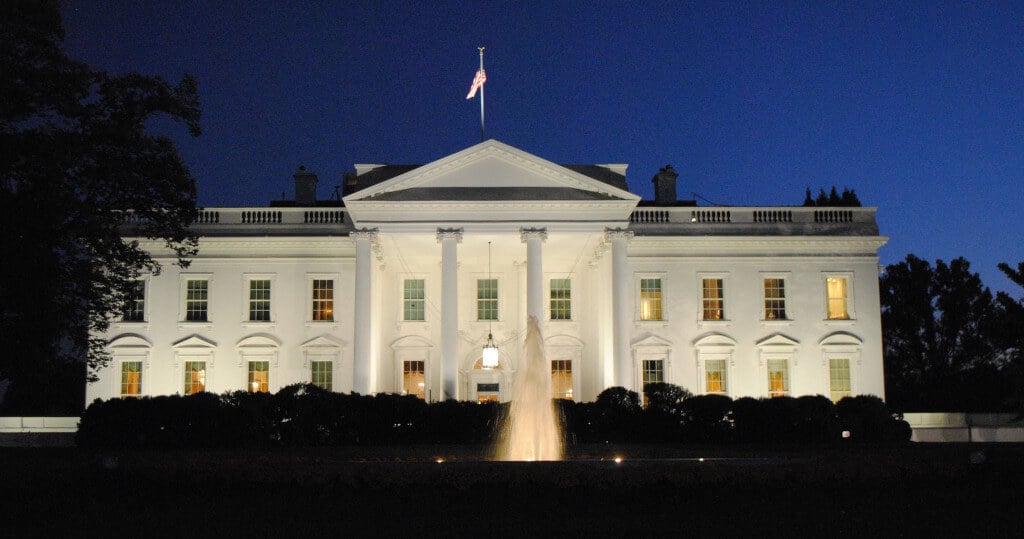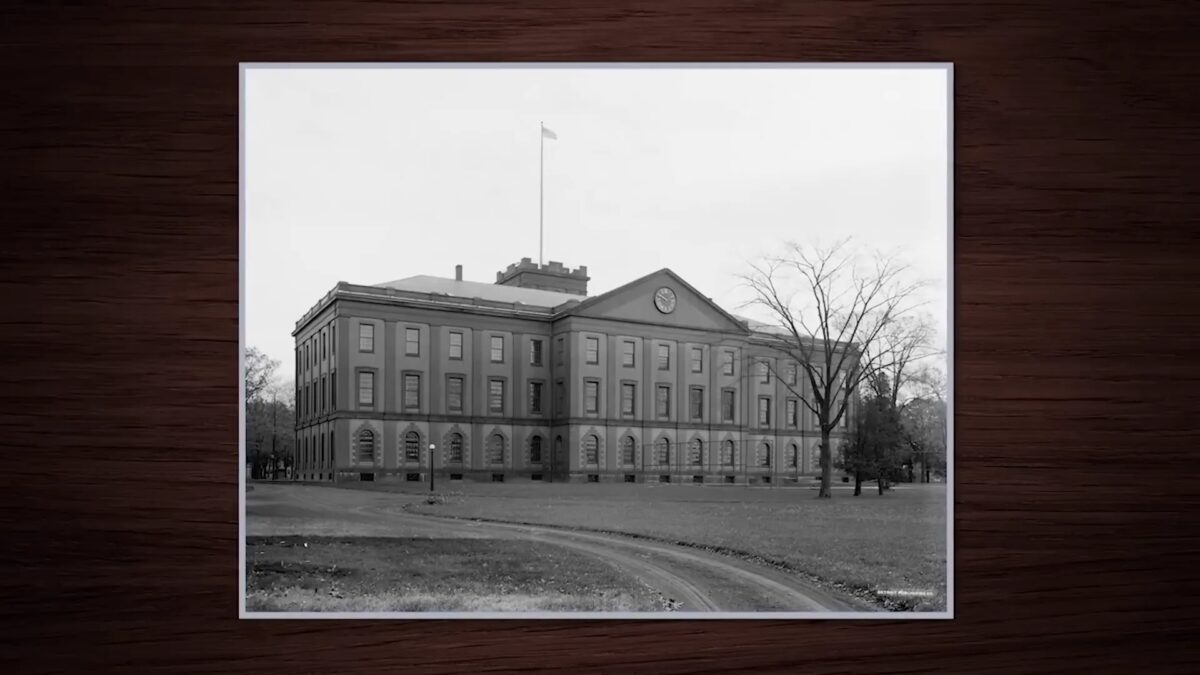Table of Contents
ToggleThe 20th Amendment to the Constitution, ratified on January 23, 1933, shortened the timeframe between a president and vice president being elected and taking office.
It also changed the date when Congress must meet and explained these changes in six sections.
Full Text of the 20th Amendment to the US Constitution
1: The terms of the President and Vice President shall end at noon on the 20th day of January, and the terms of Senators and Representatives at noon on the 3d day of January, of the years in which such terms would have ended if this article had not been ratified; and the terms of their successors shall then begin.
2: The Congress shall assemble at least once in every year, and such meeting shall begin at noon on the 3d day of January, unless they shall by law appoint a different day.
3: If, at the time fixed for the beginning of the term of the President, the President elect shall have died, the Vice President elect shall become President. If a President shall not have been chosen before the time fixed for the beginning of his term, or if the President elect shall have failed to qualify, then the Vice President elect shall act as President until a President shall have qualified; and the Congress may by law provide for the case wherein neither a President elect nor a Vice President elect shall have qualified, declaring who shall then act as President, or the manner in which one who is to act shall be selected, and such person shall act accordingly until a President or Vice President shall have qualified.
4: The Congress may by law provide for the case of the death of any of the persons from whom the House of Representatives may choose a President whenever the right of choice shall have devolved upon them, and for the case of the death of any of the persons from whom the Senate may choose a Vice President whenever the right of choice shall have devolved upon them.
5: Sections 1 and 2 shall take effect on the 15th day of October following the ratification of this article.
6: This article shall be inoperative unless it shall have been ratified as an amendment to the Constitution by the legislatures of three-fourths of the several States within seven years from the date of its submission.
20th Amendment Overview
In the original United States Constitution, the president, vice president, and Congress did not start their new term until March 4, about four months after election day.
This delay caused a significant void of leadership in the executive and legislative branches of the federal government.

While the previous president, vice president, and Congress were theoretically still in charge, they would be severely handicapped in addressing a crisis. This handicap was simply because they didn’t have much time to address problems before their respective terms ran out.
The 20th Amendment Abolished the 4-Month Delay.
Congress faced an additional problem in the original United States Constitution, as they were directed to meet at least once a year starting in December.

This stipulation resulted in a mandated “lame duck” session of Congress following a November election. The old Congress was required to meet but couldn’t adequately address the country’s needs because its term was about to expire.
The Twentieth Amendment sought to alleviate these problems by altering the timeframes of the executive and legislative branches ahead of inauguration day.
Section 1 of the 20th Amendment
Section 1 of the 21st Amendment moved the date for the inauguration day of a new president and vice president taking office from March 4 to January 20, and the new Congress from March 4 to January 3.

This alteration significantly decreased the length of constrained leadership in the executive and legislative branches.
Section 2 of the 20th Amendment
Section 2 stipulated that the United States Congress must meet once a year, as stated in the original Constitution.
However, it changed the time of the first meeting from December to January 3, eliminating the constitutionally mandated “lame duck” congressional session.

Section 3 of the 20th Amendment
Section 3 describes the line of succession of the presidency. It states that if the president-elect dies before taking office on January 20, the vice president becomes president.

Additionally, suppose a president is not chosen before the January 20 deadline or the president-elect is deemed unfit to serve. In that case, the vice president will become the acting president until a new president can be selected.

Get Smarter on US News, History, and the Constitution
Join the thousands of fellow patriots who rely on our 5-minute newsletter to stay informed on the key events and trends that shaped our nation's past and continue to shape its present.
For example, say both a president-elect and vice president-elect are considered unfit to serve their terms. In such a scenario, Congress is given the authority to choose a new acting president until a president and/or vice president can be selected.
Section 4 of the 20th Amendment
Section 4 gave Congress the power to set rules for choosing a president or vice president if either dies. It also applies when Congress must choose the president or vice president because no candidate received a majority of electoral votes.

In these situations, the House of Representatives is responsible for choosing a president for the White House, and the Senate is responsible for choosing a vice president.
Section 5 of the 20th Amendment
Section 5 stated that sections 1 and 2 of the 20th Amendment would take effect on October 15, following the ratification of the constitutional amendment by state legislatures.
Section 6 of the 20th Amendment
Section 6 specified that the Twentieth Amendment would only become law if it was ratified by 3/4’s of state legislatures within seven years of its submission.

Ratification of the Twentieth Amendment
The Twentieth Amendment to the Constitution was proposed to the legislatures of the several states by the Seventy-Second Congress on March 2, 1932.
It was declared ratified in a proclamation by the Secretary of State on February 6, 1933, after approval by the legislatures of 36 of the 48 states.
Dates of ratification:
-
Virginia — March 4, 1932
-
New York — March 11, 1932
-
Mississippi — March 16, 1932
-
Arkansas — March 17, 1932
-
Kentucky — March 17, 1932
-
New Jersey — March 21, 1932
-
South Carolina — March 25, 1932
-
Michigan — March 31, 1932
-
Maine — April 1, 1932
-
Rhode Island — April 14, 1932
-
Illinois — April 21, 1932
-
Louisiana — June 22, 1932
-
West Virginia — July 30, 1932
-
Pennsylvania — August 11, 1932
-
Indiana — August 15, 1932
-
Texas — September 7, 1932
-
Alabama — September 13, 1932
-
California — January 4, 1933
-
North Carolina — January 5, 1933
-
North Dakota — January 9, 1933
-
Minnesota — January 12, 1933
-
Arizona — January 13, 1933
-
Montana — January 13, 1933
-
Nebraska — January 13, 1933
-
Oklahoma — January 13, 1933
-
Kansas — January 16, 1933
-
Oregon — January 16, 1933
-
Delaware — January 19, 1933
-
Washington — January 19, 1933
-
Wyoming — January 19, 1933
-
Iowa — January 20, 1933
-
South Dakota — January 20, 1933
-
Tennessee — January 20, 1933
-
Idaho — January 21, 1933
-
New Mexico — January 21, 1933
-
Georgia — January 23, 1933
-
Missouri — January 23, 1933
-
Ohio — January 23, 1933
-
Utah — January 23, 1933
Ratification was completed on January 23, 1933.
Subsequent ratifications:
-
Massachusetts — January 24, 1933
-
Wisconsin — January 24, 1933
-
Colorado — January 24, 1933
-
Nevada — January 26, 1933
-
Connecticut — January 27, 1933
-
New Hampshire — January 31, 1933
-
Vermont — February 2, 1933
-
Maryland — March 24, 1933
-
Florida — April 26, 1933











